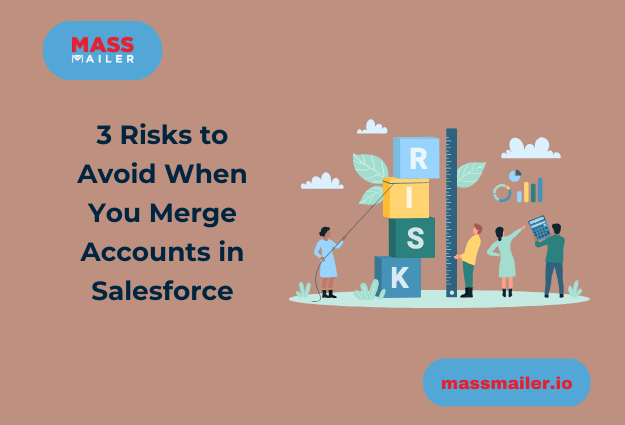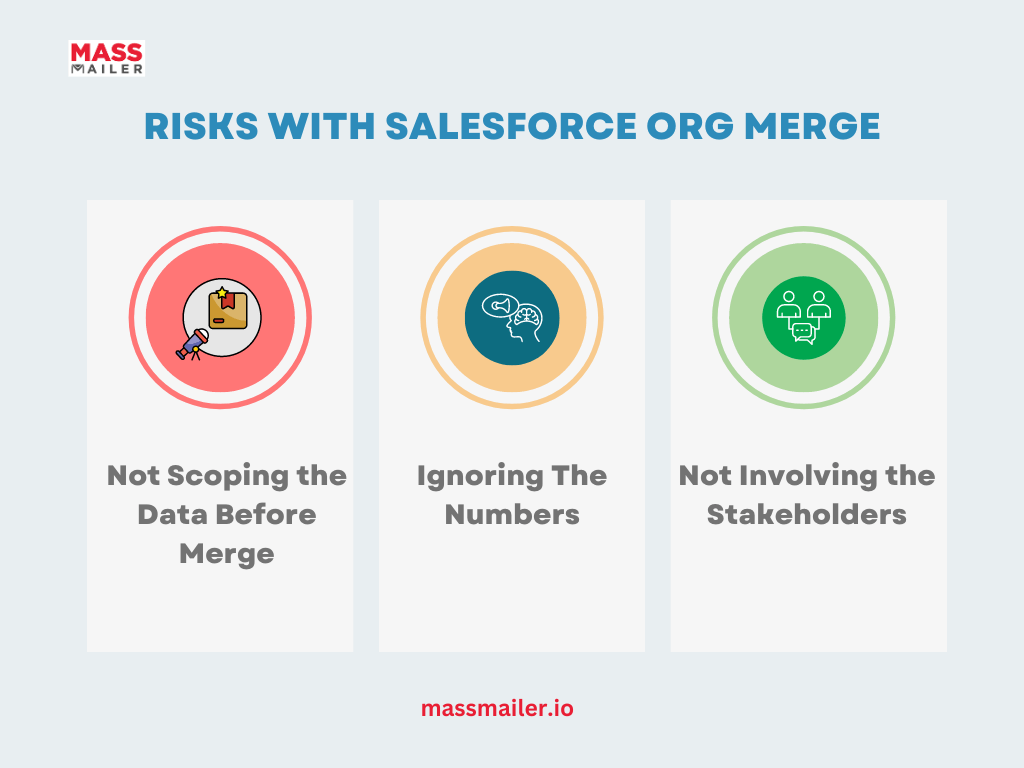3 Risks to Avoid When You Merge Accounts in Salesforce
Business success today depends more on customer experiences and loyalty than before. It is for this reason that complete Customer Relationship Management platforms like Salesforce are in widespread use.

With Salesforce, it becomes possible for enterprises to manage customer data efficiently while deriving insights that matter for growth. With that said, as the business expands, so do its operations and requirements from the Salesforce platforms.
It is in such cases that the Salesforce merger becomes a high-priority strategy on the board. If you are trying to understand how to merge accounts in Salesforce, you need to understand the three major risks associated with it.
Let’s expand on that.
What is Merging Accounts in Salesforce?
If you are handling multiple Salesforce accounts, all with their own unique data and properties, you need to understand the concept of merging to plan growth better.
Salesforce merging is also known as Salesforce consolidation. It is the process of merging multiple Salesforce accounts into a single, unified organization from which all that data can be easily accessed.
One benefit of merging Salesforce accounts is that there is no need to separately manage and maintain individual Salesforce instances when only one can fulfil the role.
A Salesforce merge can be achieved in two ways:
- Merging two Salesforce accounts together.
- Creating a new account to merge two Salesforce accounts together.
There are several situations that may warrant the margining of two or more Salesforce instances.
Reasons to Merge Accounts in Salesforce
There are three major scenarios that may trigger the need to merge multiple Salesforce accounts into a single organization.
1. Enterprise Growth
As a company grows, so do its operations and Salesforce accounts. Each account holds unique data about the customers and other businesses that the organization interacts with. Growth of the company may lead to the creation of numerous Salesforce accounts, demanding more management. Merging is thus a good choice in this situation.
2. Mergers and Acquisitions
Mergers and Acquisitions are a common occurrence in the world of business. When two companies combine into one, it makes sense to also merge the data that they individually possess on Salesforce. A Salesforce consolidation process may thus be in order.
3. Cost Effectiveness
Operating more accounts on Salesforce than needed may add to the costs, in which case it is better to consider Salesforce consolidation for better economies.
Risks With Salesforce Org Merge
Salesforce org merge can be a complicated procedure, and it comes with its own risks as well. In addition to extensive planning and flawless execution, you also need to be proactive with risk scenarios and management.
It helps to understand the challenges that can come along the way. The three major, but avoidable, risks that you need to know about are:
Risk 1: Not Scoping the Data Before Merge
If your Salesforce accounts have been in use for quite some time, there is a chance that they have accumulated large volumes of data. The numerous objects with countless fields can create unmanageable clutter that will pose challenges further down the line after merging.
This risk is easily avoidable by creating a consolidated data dictionary that can help you create a blueprint for integrating, purging, and merging objects and records. It is important to map business user input fields, determine user record relationships, gather tools for migration, and lay down the data quality expectations to achieve the best results.
Risk 2: Ignoring The Numbers
All modern organizations depend on reading metrics, measurements, and reports to make impactful and positive business decisions. Salesforce particularly provides robust analytics and reporting, but they remain underutilized or suffer from low visibility. This causes them to be ignored during Salesforce consolidation, resulting in gaps in reporting on which executives rely.
This risk can be mitigated early by preparing a comprehensive record or glossary of the key metrics that are high priority during Salesforce consolidation. The import of these metrics can then take place without missing anything, helping ensure business continuity even after the merge.
Risk 3: Not Involving the Stakeholders
The Salesforce consolidation rollout may run into several downstream issues in the absence of inputs from stakeholders and a meticulous change management plan.
Considering that the accounts contain information of immediate use to the business, it is imperative to involve all the stakeholders in determining potential risks and mitigation plans to gather multiple perspectives and approaches to a problem.
While this approach may not address all the issues that emerge from a full-scale overhaul, it helps to give direction to the execution of Salesforce consolidation. It also achieves accountability by distributing the responsibility equitably across the table, making involvement more productive.

The Purpose and Benefits of Salesforce Merge
The major purpose of merging Salesforce accounts is to create one unified database where all information can be organized and accessed efficiently. It is prudent for growing organizations to clean their data and retain only the best quality records in order to avoid storage costs or analytics errors because of disorganized data.
Salesforce consolidation is beneficial for growing enterprises in the long run.
- It enhances the quality of customer records and streamlines all the data.
- It improves the level of customer service by enhancing data accuracy.
- It cleans up the customer data of duplicates, redundancies, or missing values.
MassMailer: A Salesforce Email Companion for All Instances
If you want to merge accounts in Salesforce, it is important to create a thorough plan that covers all the objects, fields, records, and other data. This includes working with customer emails stored in your Salesforce bulk mail tools.
An easier method to export email information is to leverage MassMailer as your default bulk email tool in Salesforce. This is a Salesforce-native bulk email solution that provides you with multiple email marketing functionalities. It keeps your customer email data consolidated and organized to facilitate the Salesforce merging process.
To understand MassMailer in more detail, visit the website.
